
Healthcare unicorns: Key stats you should know


From 2021 to early 2022, we witnessed an unprecedented billion-dollar-baby boom, with over 530 fresh unicorns prancing into the business scene.
But if history has taught us anything, it's that after every party comes the cleanup. Due to a downturn-induced funding crunch, new unicorn births have tanked to just 18 in Q2’23 — down 85 percent from Q1’22.
One sector seems to be bucking the trend, though: healthcare. In Q1 2023, global digital health funding and deals were the first to stabilize after a year of decline.
What sets healthcare apart, you ask? The lack of skilled professionals in legacy healthcare providers, supply chain pressures, and rising interest rates are all driving the growth of the private health sector.
On top of that, as Eugene Kruglik, a healthtech delivery manager at Vention, notes, “Healthcare stocks tend to offer higher dividend yields and more stable earnings than the broader stock market, which makes them a safe haven when it comes to weathering economic storms.”
Our deep dive into healthtech unicorn data validates Eugene’s sentiment: While the checks might not be as hefty as before, investors are still betting on innovative healthcare startups in the race for nine-figure valuations.
Funding for healthcare startups
Healthcare investments peaked during the pandemic: In 2021, the sector saw 77 percent year-over-year growth in funding and a $51.9B total invested. Yet, in 2022, healthcare VCs scaled back their investment pace to $24.6B — 52.6 percent below 2021 figures; this mirrors the decline seen across the broader venture environment, where funding fell 33 percent YoY.
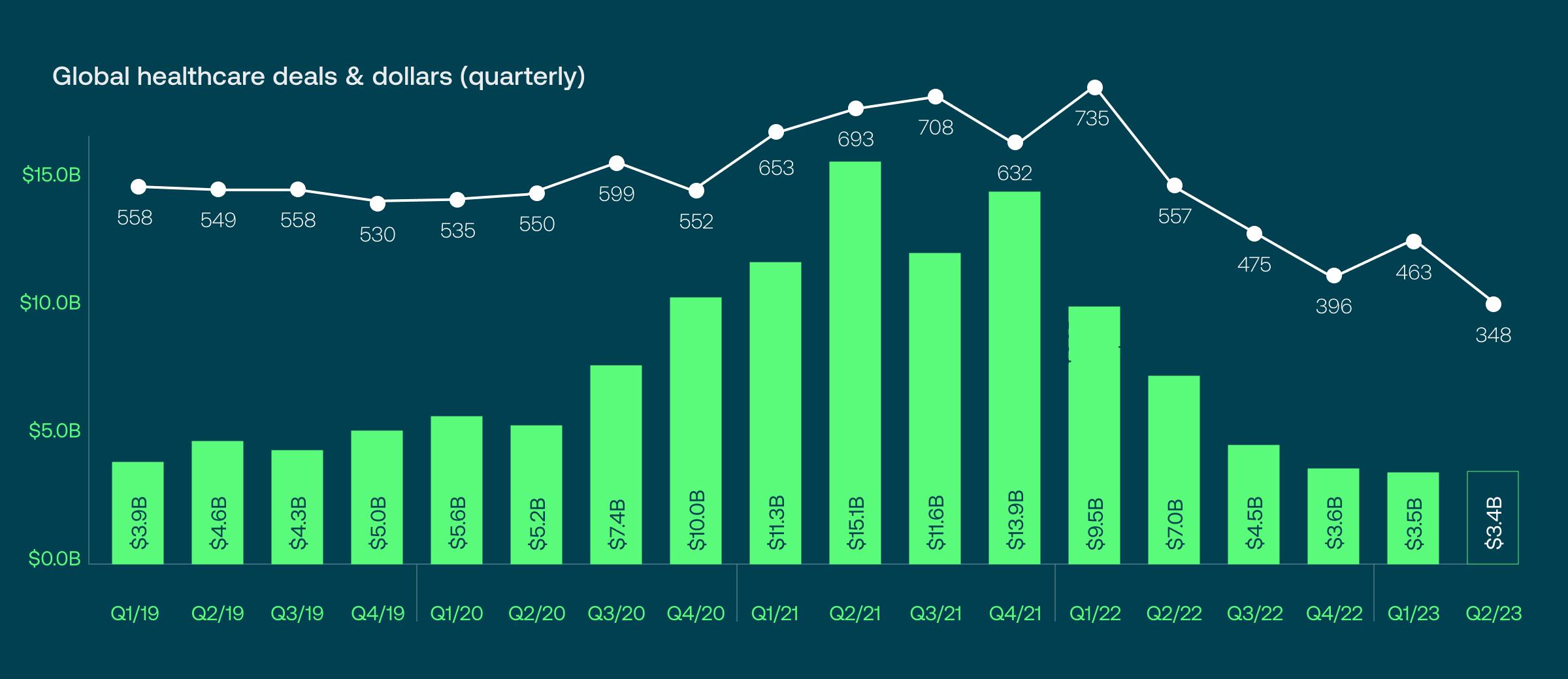
Even though global healthcare funding hit an eight-year low in Q2'23, investors continue to back promising startups, with Q2 seeing a boost in early-stage deal sizes. Possibly, VC funds are guided by the 2008 playbook, mostly betting on seed-stage funding, which resulted in a flurry of unicorns — think Uber, Dropbox, and Spotify — we can't do without now. Plus, this cautious approach mitigates the risks of investing in companies with inflated valuations amidst weak equity markets.
The rollercoaster-like QoQ pattern of healthcare investment is indicative of the industry's dynamic nature, driven by the continuous evolution of medical technology, policy changes, and ever-changing societal demands. So, a healthcare funding bounce-back may be just round the corner — especially considering the marginal difference of only 0.1 percent between healthcare funding and that of its closest rival, fintech, in 2022 (a 13.8 percent delta in 2021).
And while things indeed look a bit dicey, digital health startups accounted for 65 percent of global funding in Q2’23. Compared to fintech — where financing nose-dived 48 percent QoQ in Q2’23 — healthcare investment remains healthy-ish.
Want to develop a profitable healthcare solution?
Share your project requirements and we'll start within days.
Number of healthcare unicorns
In 2022, unicorn births across all industries witnessed a 52 percent decline compared to 2021; the percentage of new digital health unicorns also dropped 47 percent — consistent with the overall market bust.
But there’s a glimmer of good news: In Q2’23, new unicorn births jumped 20 percent in Q2’23 after hitting a six-year low in Q1’23.
Those figures lead Dave Hecker, our West Coast CTO, to stick to a largely optimistic outlook. "The slowdown in investment is a natural part of the tech sector's correction and realignment,” he explains. “There’s plenty of capital waiting for opportunities once the dust settles."
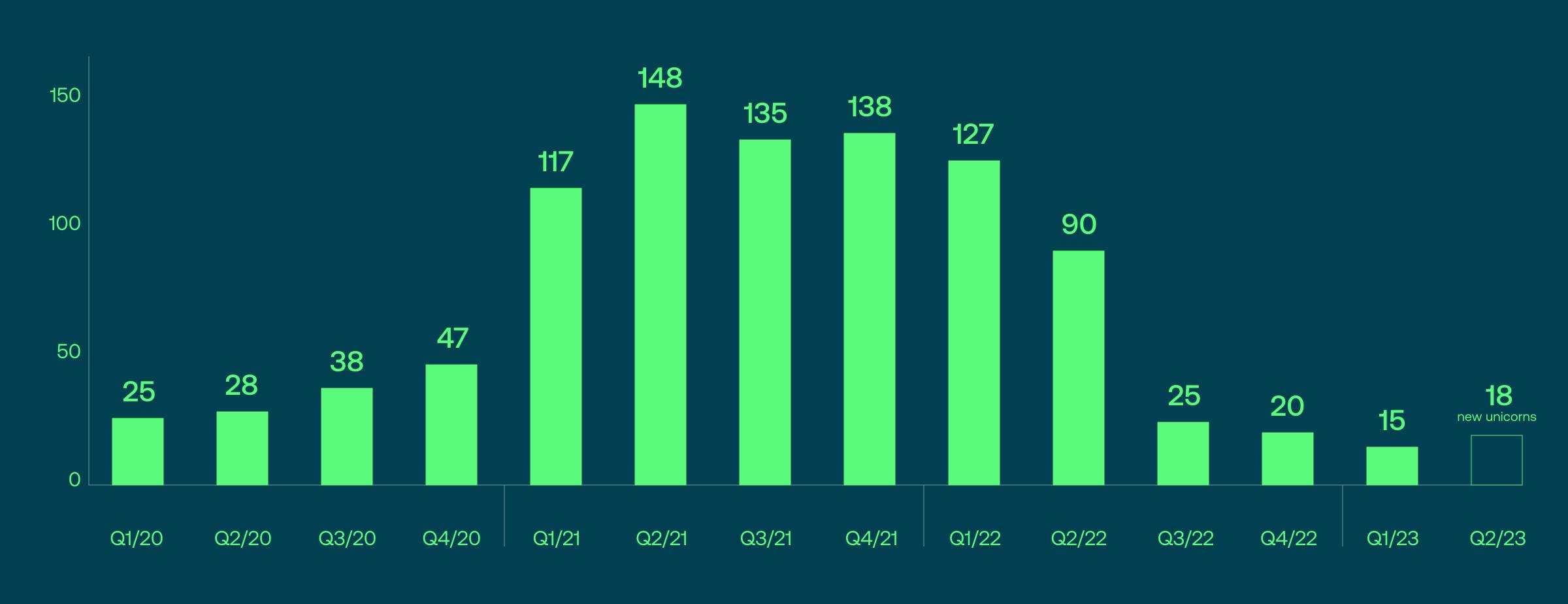
Number of new digital health unicorns & total healthcare unicorns (quarterly)
2021 saw a record-breaking 46 new healthtech unicorns, pushing the total count to 72 within just two years since the onset of the pandemic. Still, while the birth rate remained stable for the first half of 2022, there was a dip to only two one-horned wonders in Q4.
The outlook for 2023, however, looks promising: Four companies have already managed to achieve digital health unicorn status in the first six months of the year.
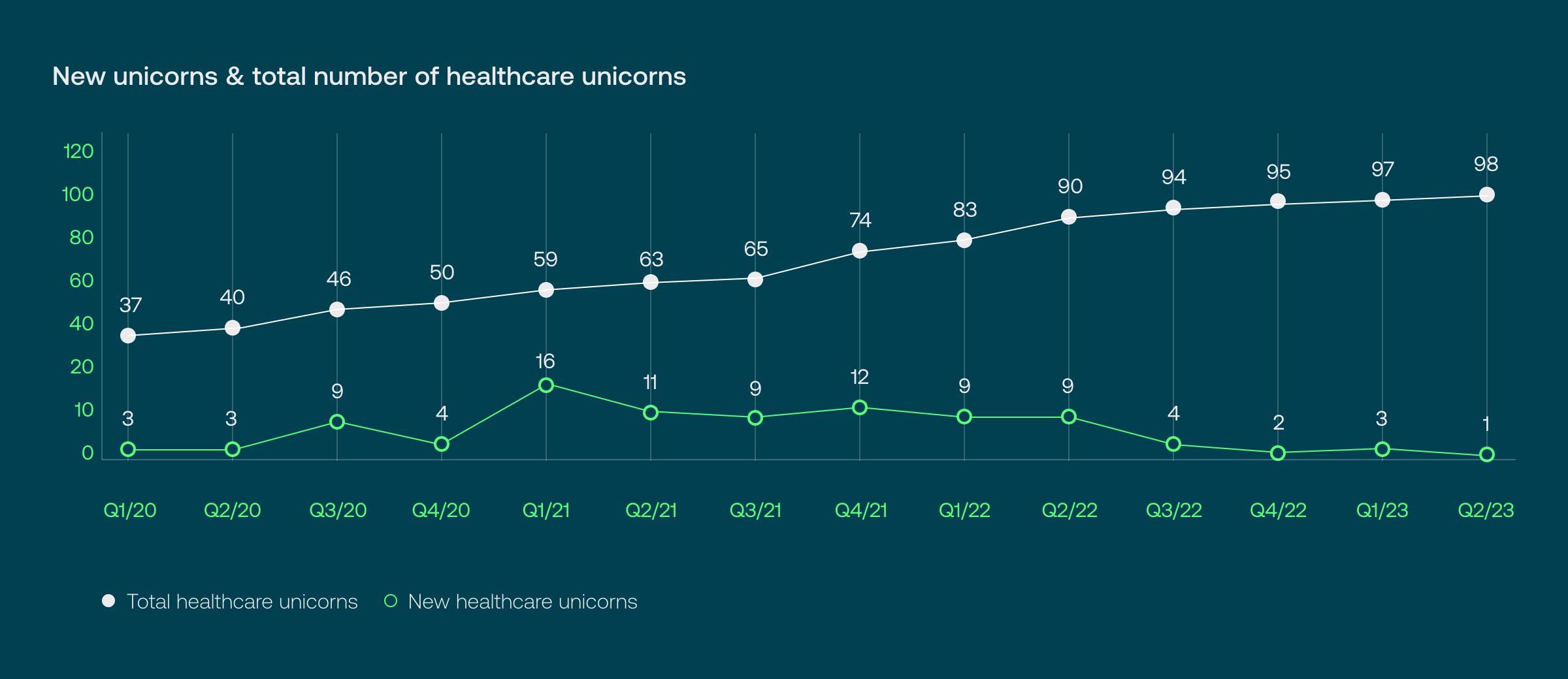
The most healthcare unicorns by sector
According to CB Insights, healthcare & life sciences ranks fifth (10 percent) in the unicorn herd, with industrials (15 percent), financial services (18 percent), consumer & retail (18 percent), and enterprise tech (30 percent) galloping ahead.
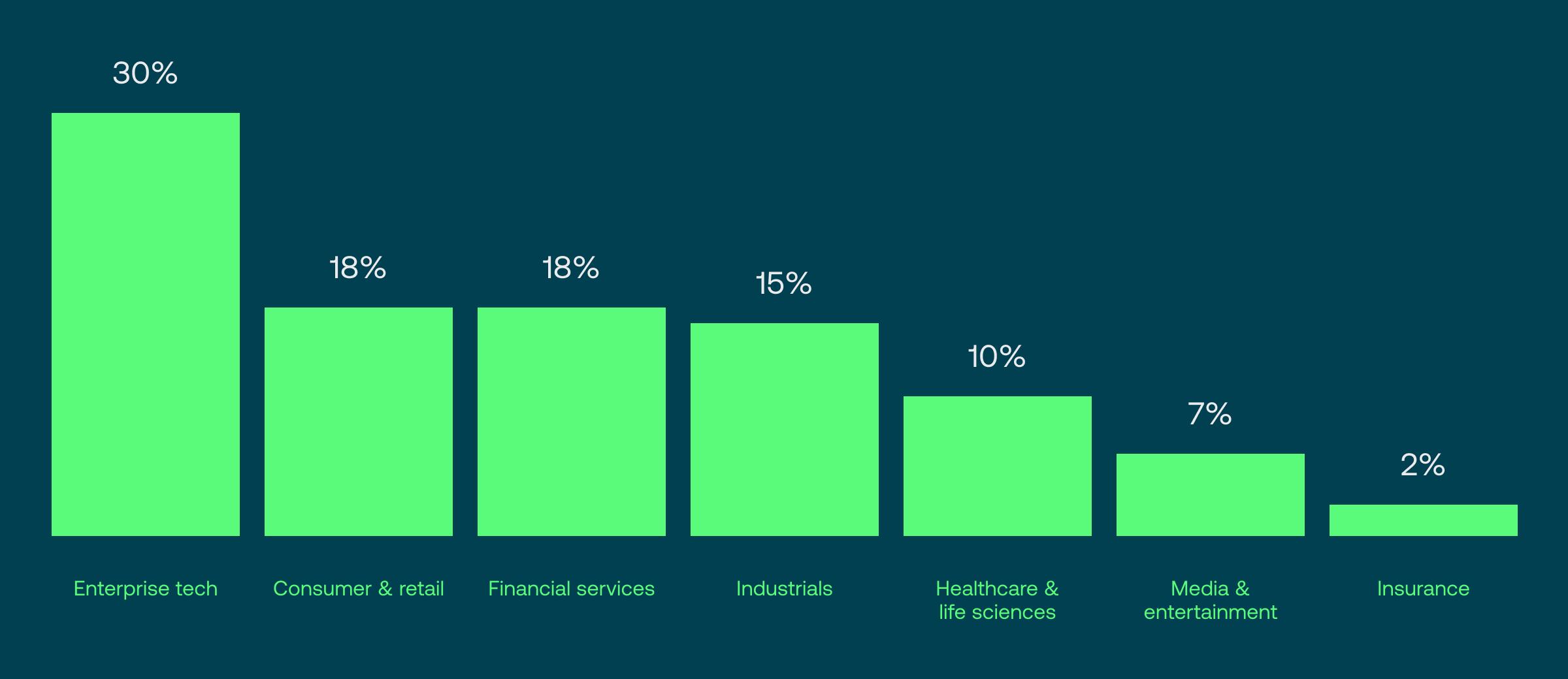
Healthcare companies didn't make it to the winners’ podium, likely due to ongoing regulatory challenges in the industry, which — coupled with the need for thorough research and extensive clinical trials — usually result in longer development cycles and funding rounds. Case in point: For most companies in the AI and fintech space, it takes four to five years to hit a billion-dollar valuation, while the majority of healthcare startups require six years to reach the same milestone.
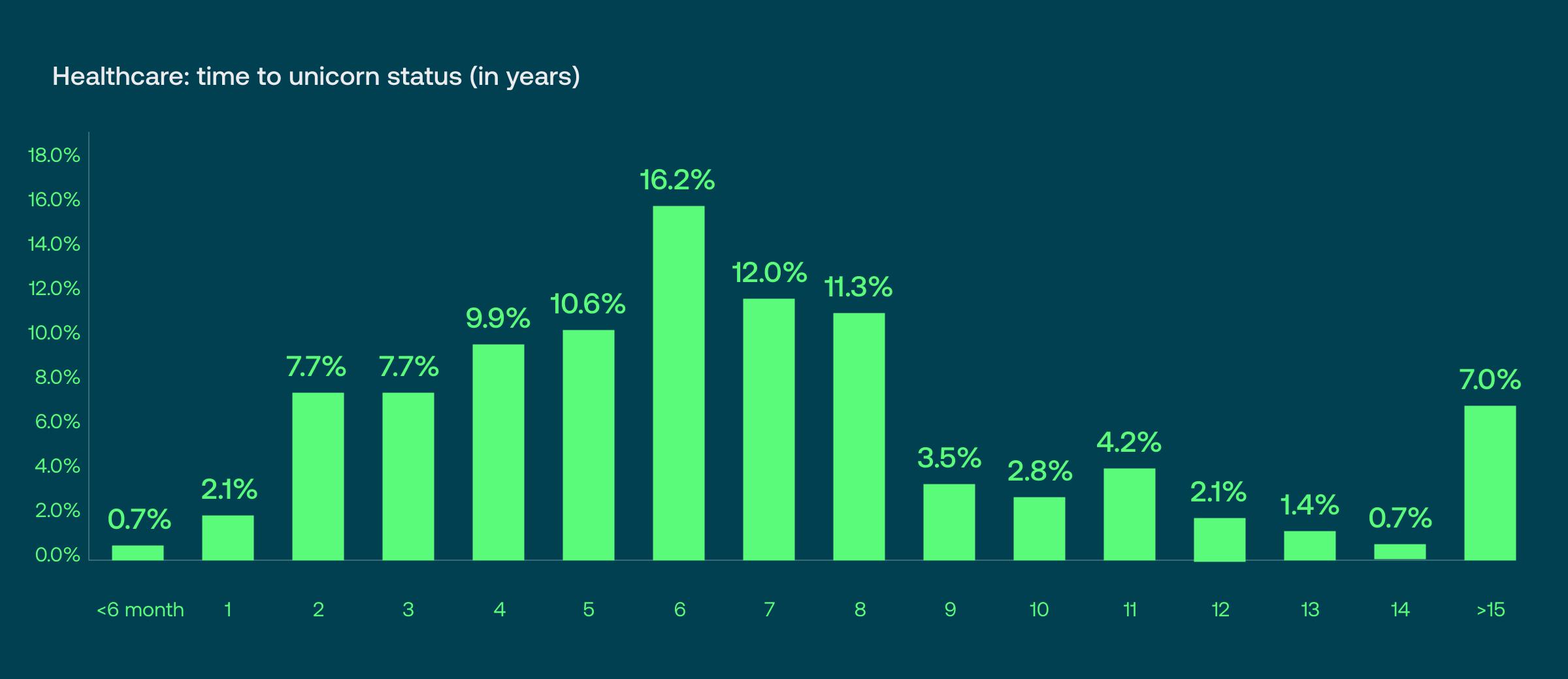
Regional distribution of healthcare unicorns
Predictably, the US emerges as the stronghold of healthtech unicorns, with almost 80 percent of the global total. Asia takes the runner-up spot: It boasts 12 percent of healthcare unicorn startups, followed by Europe (11 percent).
China dominates the Asian medical unicorn scene, with four located in Hangzhou; France leads the pack in Europe, cementing its position as the new startup powerhouse in the region. (To get a taste of the crème de la crème of the French tech scene, check out Doctorlib, a medical appointment management platform with a $6.4B valuation, and DentalMonitoring, the world's first digital dentistry solutions powered by AI.)
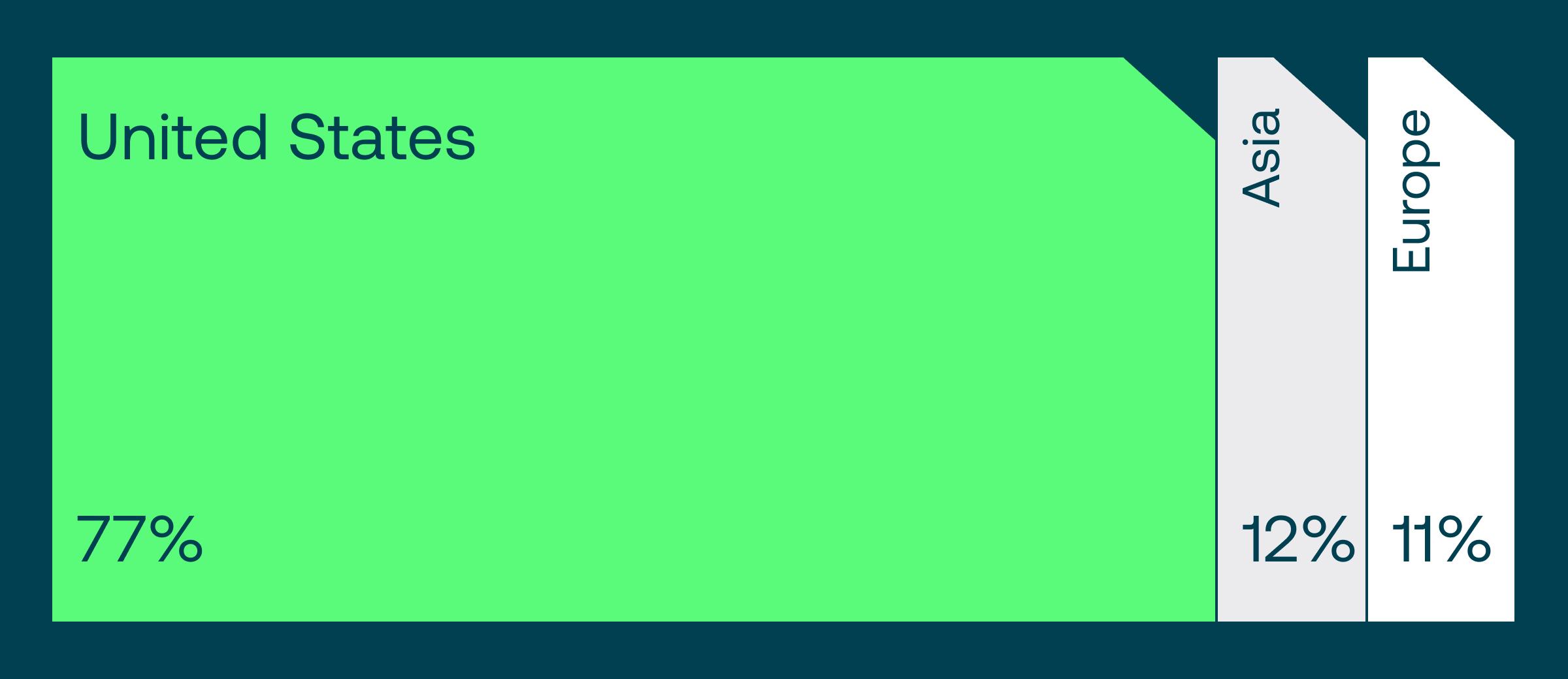
Frontline healthcare unicorns
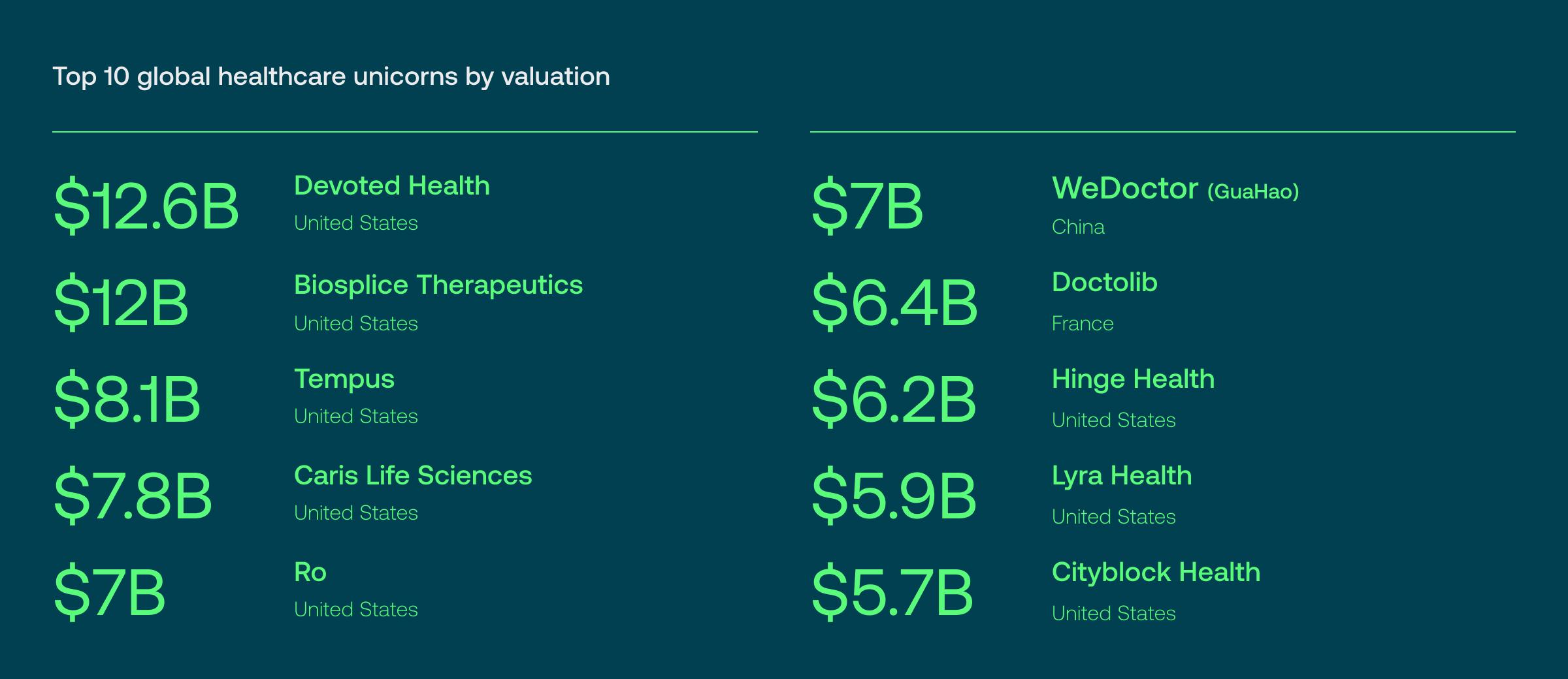
Top subdomains for healthcare unicorns
Biotech startups have been VC darlings for a while, thanks to low-interest rates and a pandemic-fueled hunger for scientific innovation that led to a cash influx. Yet, after reaching a pinnacle in 2020 and 2021, funding began to wane in 2022 and is now at a comparable level to 2018 and 2019.
But don't let the numbers fool you: As CB Insights recently noted, "biotechs are recession-resistant," so the companies in the sector are still scoring huge wins even as VC capital as a whole slows. Take, for example, ReNAgade Therapeutics, which just scooped up $300 million in a Series A (yes, you read that right). The company develops RNA drugs that aim to treat diseases affecting "the immune system and kidney and muscle cells?"
Unicorn companies find the fitness and pharma industries to be the second and third most attractive healthcare subdomains respectively. Some sources even dubbed 2022 as the "year of acquisitions and investment" in the fitness and wellness industry.
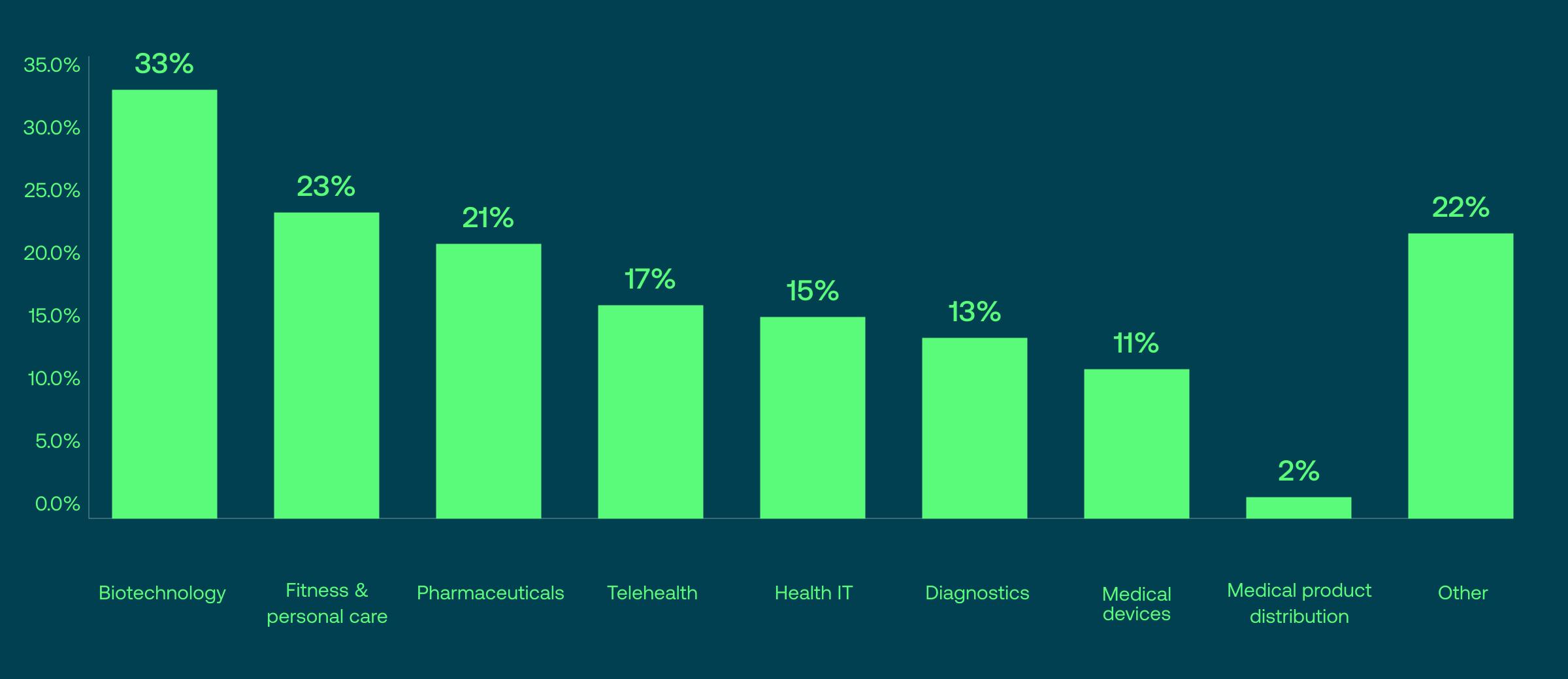
But what’s ahead for digital health unicorns? We expect substantial growth among the US-based companies that provide direct patient care or prescription services.
“With big players like Amazon and Walmart attempting to disrupt the space and so much inefficiency institutionalized in the healthcare system, there’s plenty of room for expansion,” Dave says. “Healthcare is notoriously pricey in the US, and though disruption might seem a far cry, I believe we're on the brink of a major breakthrough."
Our work on groundbreaking telemedicine solutions, and mental health and femtech apps, as well as partnerships with healthcare unicorns like K Health and Thirty Madison, makes us confident that recent tech strides will give rise to a whole new breed of unicorn companies. Not just responsive, but revolutionary powerhouses that will redefine the healthcare space with inherently ingenious products.
Eugene Kruglik is sure that the present funding drop is temporary. "With breakthroughs in AI, machine learning, big data, wearables, and genomics, top-notch on-demand patient care is no longer a dream," he says. "Investors are using this slowdown to reassess their portfolio and figure out their next big investment."





